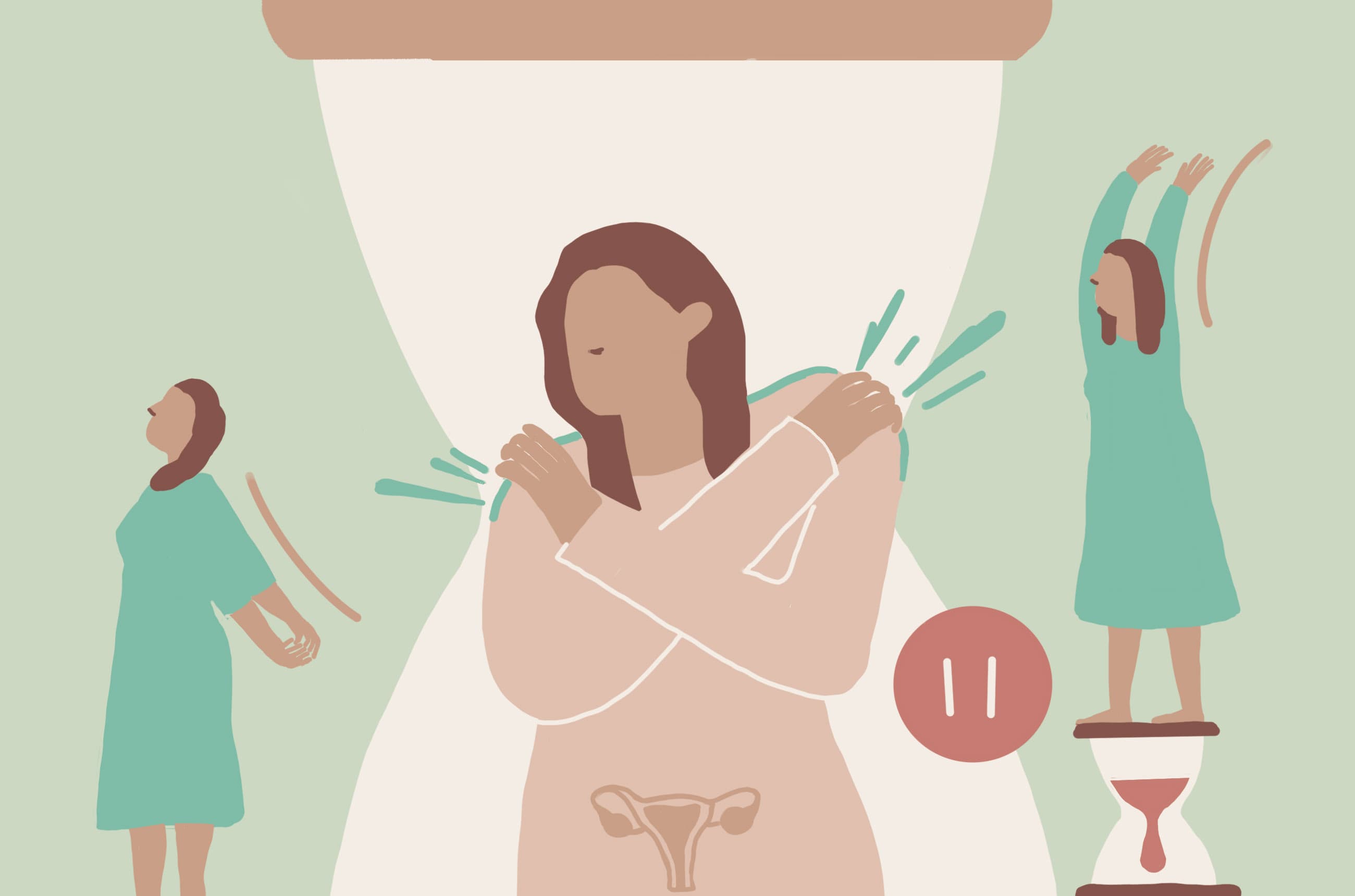Overview
Frozen shoulder, also known as adhesive capsulitis, is a painful and immobilizing condition that severely affects the movement of the shoulder joint. While frozen shoulder accounts for a percentage of all instances in the general population, research statistics show a high occurrence of frozen shoulder following menopause, pointing to alterations in hormone levels as one of the likely causes during this time of life.
This comprehensive guide looks at the origins, symptoms, and treatments for frozen shoulder in menopausal women, which can help patients regain mobility and quality of life.
What is a frozen shoulder?
Frozen shoulder is a condition in the shoulder characterized by pain, stiffness, or limited range of motion in the shoulder joint. The usual sequence of events in this condition passes through three phases:
- Freezing Stage: Pain increases, movement becomes more restricted.
- Frozen Stage: Pain improves, but there is residual stiffness and limited mobility.
- Thawing stage: slow improvement in mobility with less discomfort.
This can take anywhere from one to three years for the whole process to occur and has a major influence on daily living.
The Link Between Frozen Shoulder and Menopause
Hormonal Changes
Extreme decline in the levels of estrogen, actually a hormone responsible for joint health and elasticity, is caused by menopause. This could cause inflammation, less lubrication inside the joints, and higher chances of conditions such as frozen shoulder.
Increased Susceptibility
Studies have shown that the most susceptible age group for developing frozen shoulder is between 45 to 60 years, with menopausal women being the most at-risk population. Although the exact mechanisms continue to be investigated, hormonal changes are widely recognized as a critical factor.
Associated Conditions
More often than not, menopause is combined with other health issues, such as osteoporosis and thyroid dysfunction that may give rise to an increased risk of developing frozen shoulders.
Symptoms of Frozen Shoulder during Menopause
Early identification of the symptoms can prevent the frozen shoulder condition from getting worse. Some common symptoms include:
- persistent pain in the shoulder joint with a particular emphasis on nighttime;.
- Difficulty with overhead or rotational movements.
- Gradual loss of shoulder mobility.
- Pain worsens with movement, improves with rest.

Risk Factors Peculiar to Menopausal Women
Several factors increase the risk of frozen shoulder during menopause:
Age: The risk is higher among middle-aged women.
Sedentary Lifestyle: During menopause, a decrease in the level of outdoor activities makes muscles and joints weak.
Diabetes: Frozen shoulder is also more common in menopausal women with type 2 diabetes.
Thyroid Disorders: Various studies have associated adhesive capsulitis with thyroid disorders such as hypothyroidism and hyperthyroidism.
Effective Treatments for Frozen Shoulder in Menopause
1. Physiotherapy
Individually targeted physiotherapy treatment is still one of the most effective approaches to frozen shoulder management, which includes mild exercises to allow stretching and range-of-motion techniques that aim at restoring mobility with a reduction of stiffness.
Key Exercises
- Pendulum Stretch: It relieves tension and increases mobility.
- Cross-Body Stretch: Loosens the shoulder joint, improving flexibility.
- Doorway Stretch: Provides flexibility to the shoulder by increasing range of motion.
2. Pain Management
Pain management during the menopausal stage of life is an important aspect that improves the overall quality of life. Recommended options include the following:
- Nonsteroidal Anti-Inflammatory Drugs (NSAIDs): Considered useful for symptomatic pain and inflammation reduction.
- Corticosteroid Injections: Provide temporary relief in severe cases.
3. HRT (Hormone Replacement Therapy)
HRT may “balance the books” for menopausal women by making up the deficit in the absence of estrogen, so immensely crucial in the problem of frozen shoulder. Consult a healthcare provider to assess the risk versus benefit of HRT.
4. Alternative Therapies
- Acupuncture: This will increase the flow of blood and reduce pain sensitivity.
- Heat Therapy: This helps in relaxing the patient and getting rid of stiffness.
- Massage therapy: Improved circulation and reduced tension in the affected area.
5. Surgical Intervention
Among the non-invasive options, arthroscopic capsular release is considered a surgical option for the rare occurrences of failures. This is another kind of minimal invasive procedure to restore motion by releasing constrictive joint tissues.
Acid Reflux or Heart Attack Quiz
Extreme Tooth Pain | Causes, Remedies, and Solutions
How to avoid Frozen Shoulder During Menopause
Stay Active
Regular exercise, like yoga, swimming, and tai chi, keeps the joints supple and prevents stiffness.
Maintain Healthy Joints
Adequate nutrition with a balance of calcium, vitamin D, and omega-3 fatty acids supports bone and joint health.
Monitoring Hormonal Health
Schedule regular medical check-ups during menopause in order to note any changes, which will help in the timely detection and management of hormonal imbalances.
Address Underlying
This effectively avoids frozen shoulders by managing conditions such as diabetes and thyroid disorders.
When to Seek Medical Care
Medical attention is warranted when the pain in the shoulder persists beyond a couple of weeks or impairs daily functioning. Early intervention reduces morbidity and prevents long-term complications.
Conclusion
Frozen shoulders during menopause are debilitating yet manageable. Menopausal women will be able to regain shoulder mobility and resume their quality of life by understanding its etiology, early recognition of symptoms, and adopting effective treatment strategies. A proactive approach toward joint health, added to professional medical care, ensures optimal recovery with long-lasting relief.
